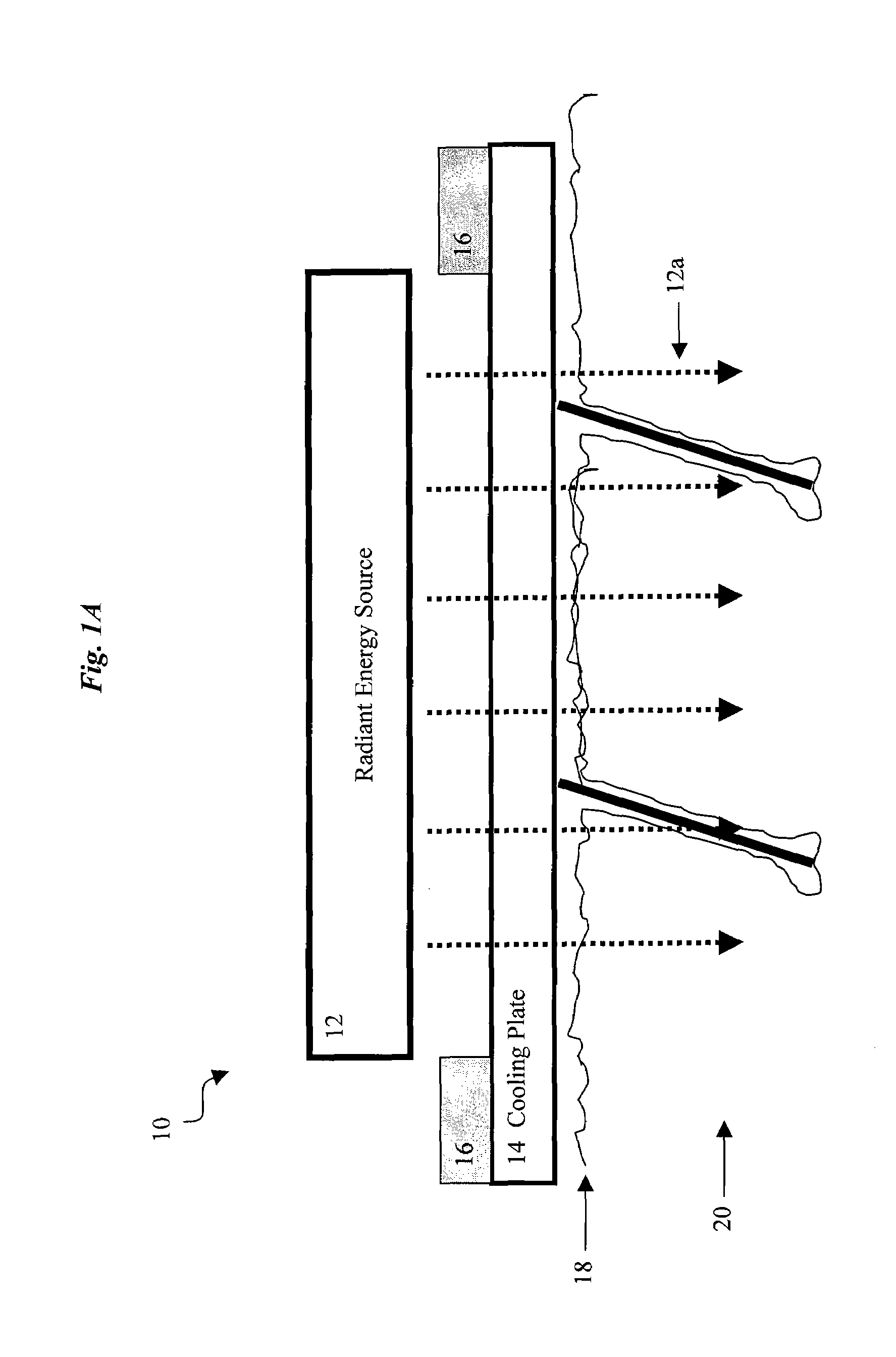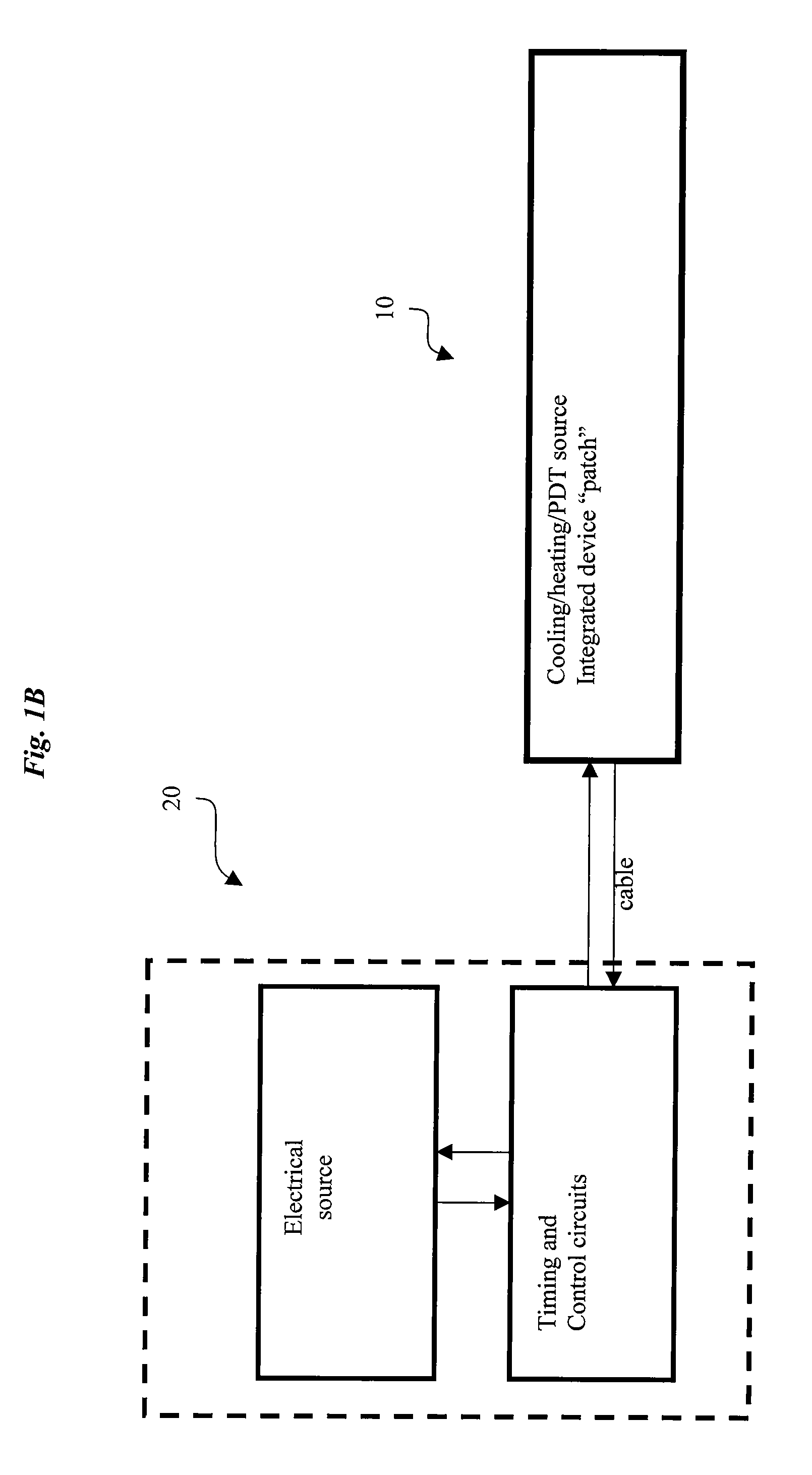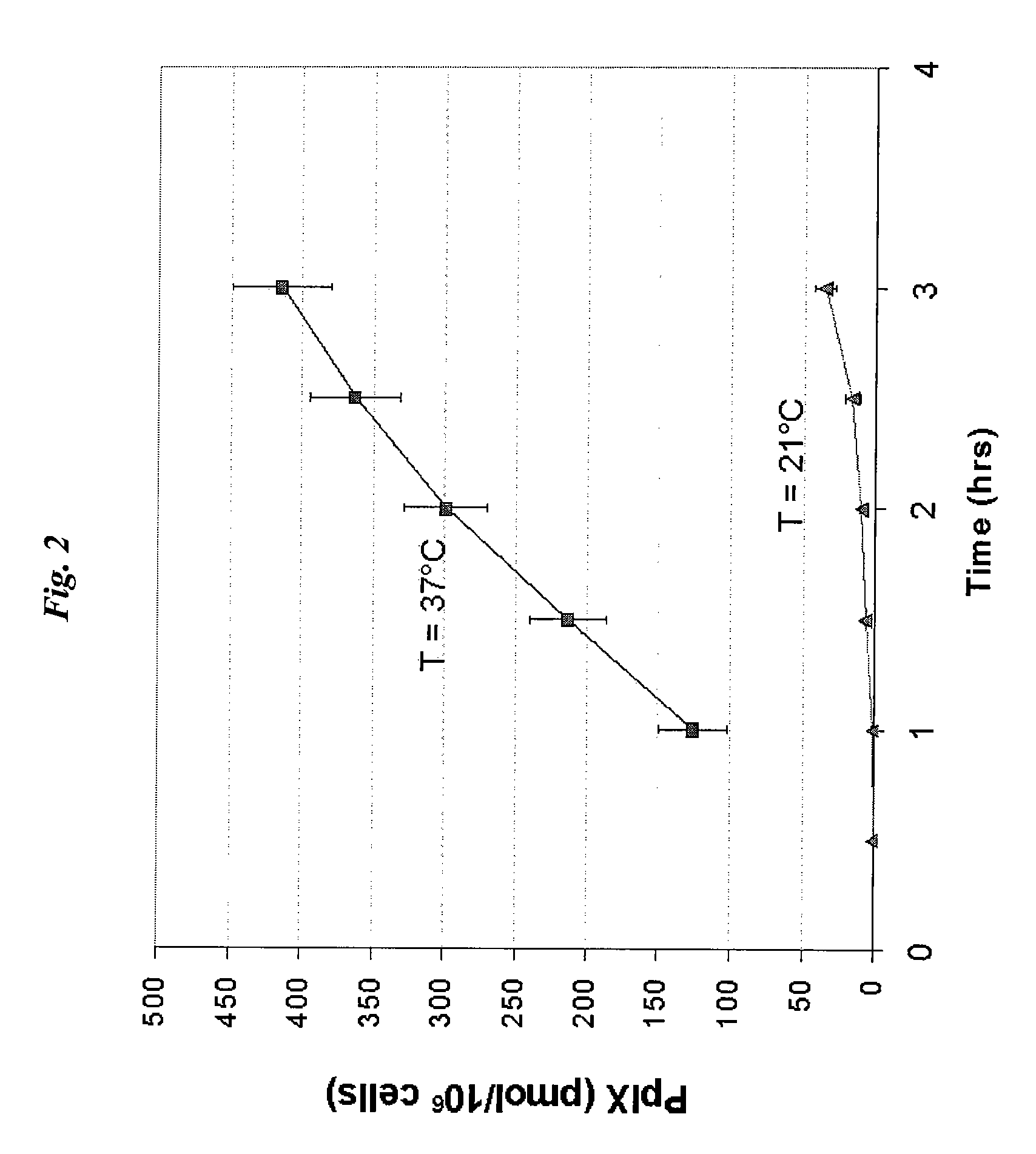Methods and devices for epithelial protection during photodynamic therapy
- Summary
- Abstract
- Description
- Claims
- Application Information
AI Technical Summary
Benefits of technology
Problems solved by technology
Method used
Image
Examples
example 1
[0037]Two trials of rat epidermal keratinocyte (REK) cells were incubated with 0.5 mM ALA at temperatures of 21° C. and 37° C., respectively, for varying times. As shown in FIG. 2, incubation at 21° C. resulted in a significant decrease in PpIX formation as compared to incubation at 37° C. For example, after three hours, the cells at 37° C. had a PpIX concentration greater than 400 pmol / 106, while the cells at 37° C. had a PpIX concentration less than 50 pmol / 106. Accordingly, a temperature gradient of about 16° C. is more than sufficient to inhibit metabolism of a photosensitizing agent in epidermal tissue surrounding a targeted treatment site.
example 2
[0038]Several trials of rat epidermal keratinocyte (REK) cells were incubated with various amounts of ALA ranging from 0.1 mM to 0.5 mM, at various temperatures ranging from 15° C. to 40° C. As shown in FIG. 3, PpIX formation was significantly inhibited in cells having a temperature of about 25° C. or less. PpIX formation increased significantly in cells having a temperature of about 30° C. or more.
example 3
[0039]Several trials of rat epidermal keratinocyte (REK) cells were pre-incubated with various amounts of 4,6-dioxoheptanoic acid (DOHA) ranging from 1.sup.−8 M to 1.sup.−4 M. The cells were then washed, and incubated with 0.25 mM ALA for 3 hours. As shown in FIG. 4, PpIX formation in cells chemically treated with DOHA at concentrations greater than 10.sup.−7 M was significantly inhibited, and even further chemical inhibition occurred at DOHA concentrations greater than 10.sup.−5 M.
PUM
| Property | Measurement | Unit |
|---|---|---|
| Temperature | aaaaa | aaaaa |
| Temperature | aaaaa | aaaaa |
| Temperature | aaaaa | aaaaa |
Abstract
Description
Claims
Application Information
 Login to View More
Login to View More - R&D
- Intellectual Property
- Life Sciences
- Materials
- Tech Scout
- Unparalleled Data Quality
- Higher Quality Content
- 60% Fewer Hallucinations
Browse by: Latest US Patents, China's latest patents, Technical Efficacy Thesaurus, Application Domain, Technology Topic, Popular Technical Reports.
© 2025 PatSnap. All rights reserved.Legal|Privacy policy|Modern Slavery Act Transparency Statement|Sitemap|About US| Contact US: help@patsnap.com



